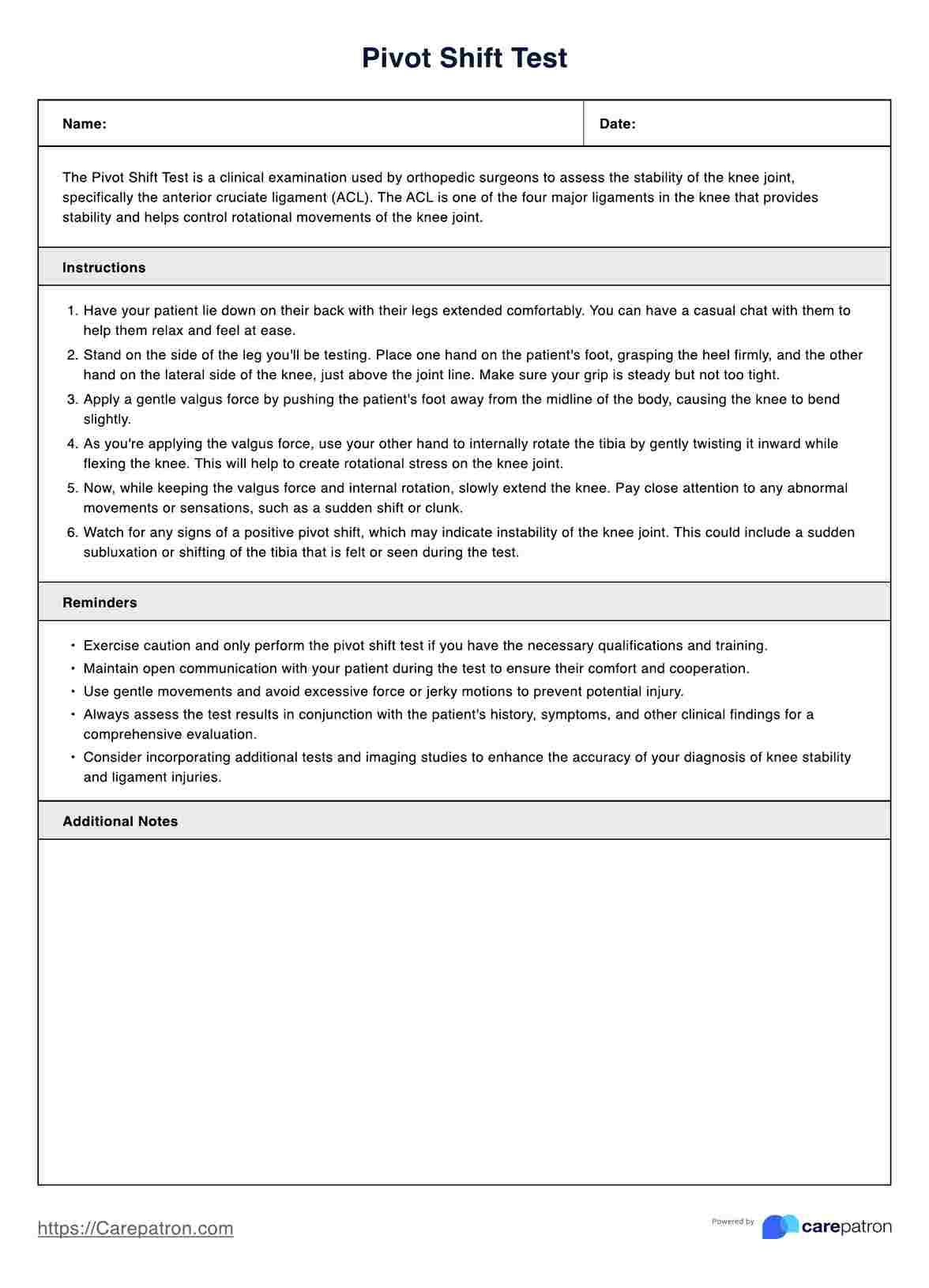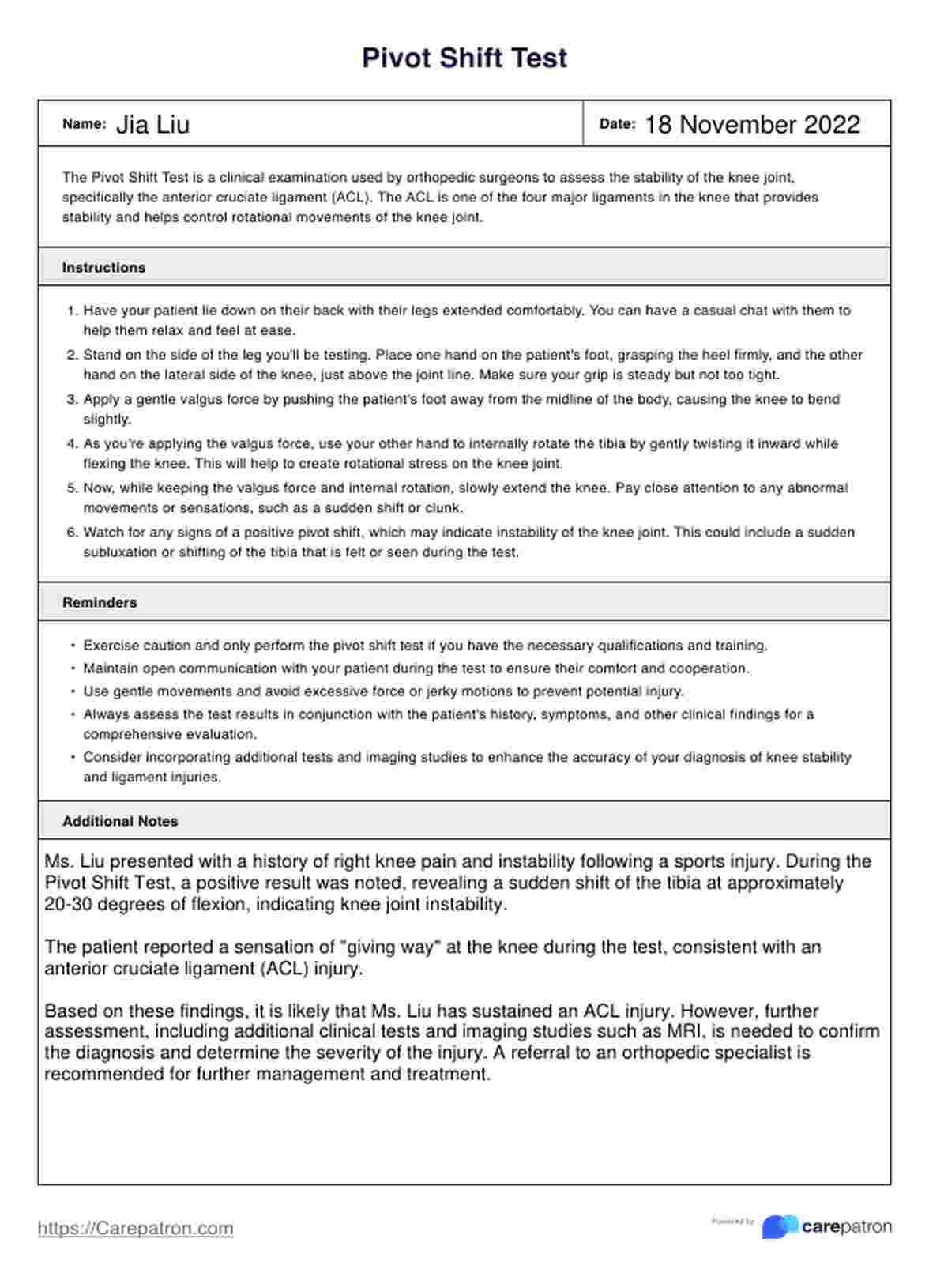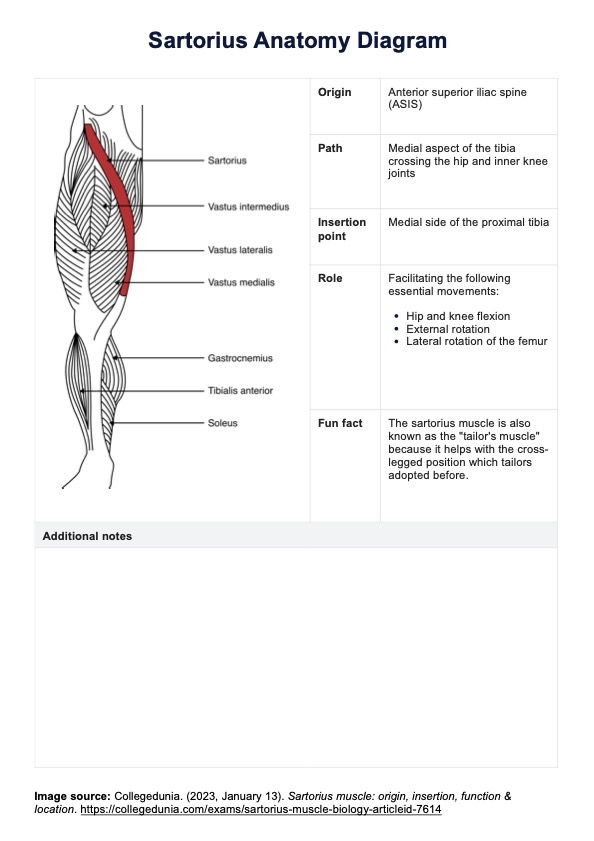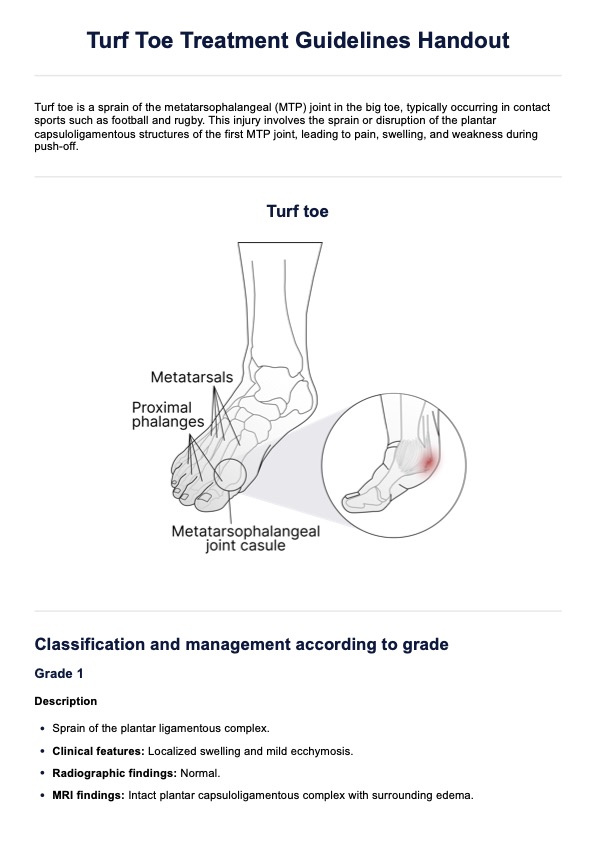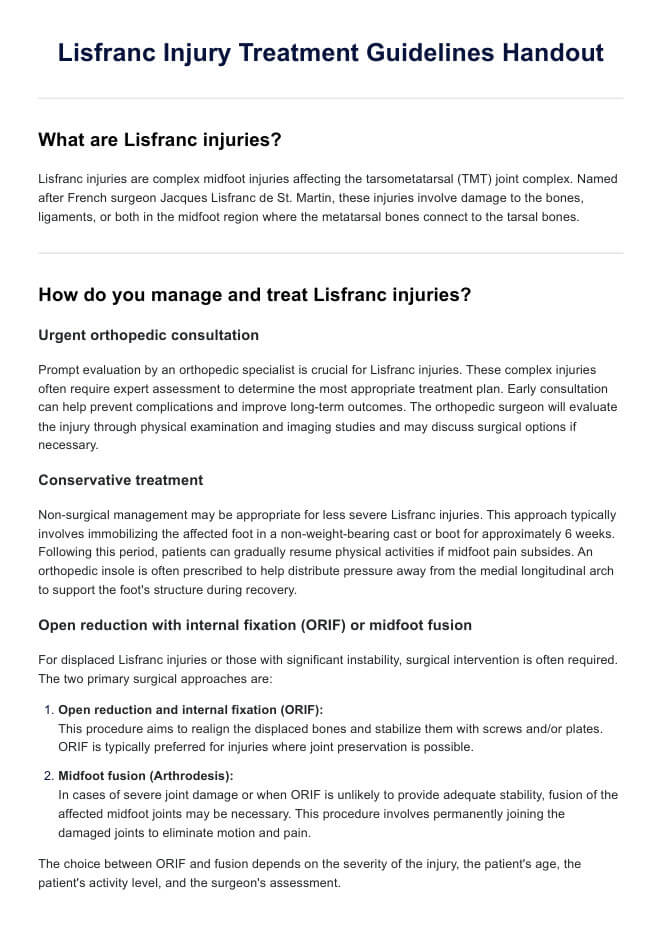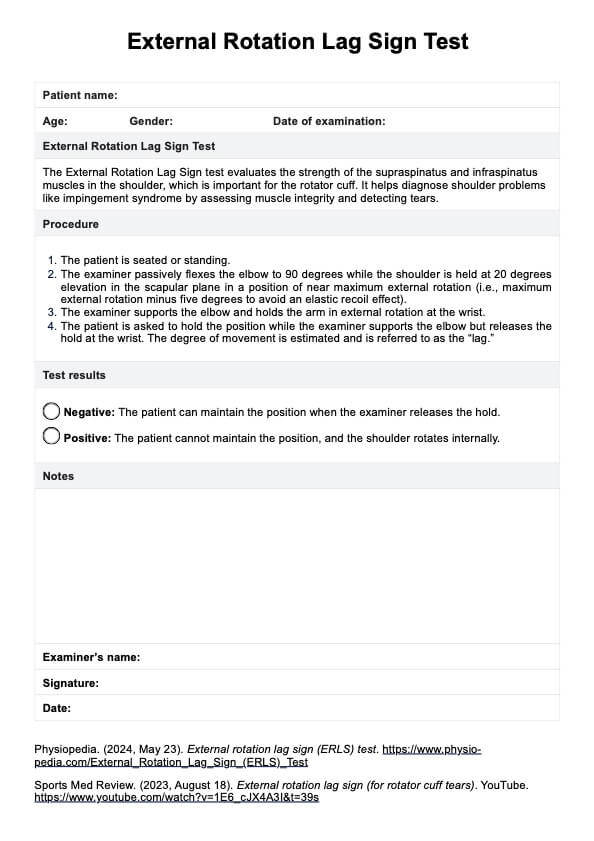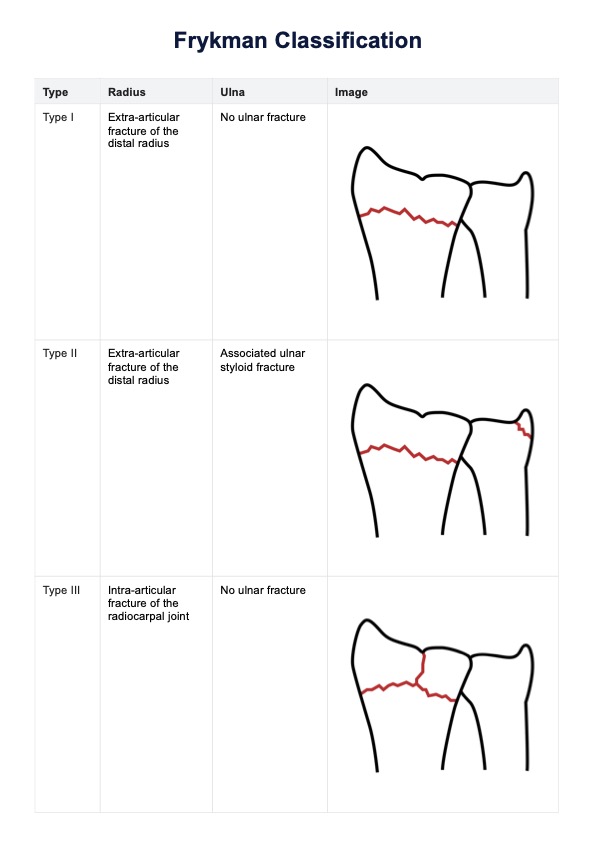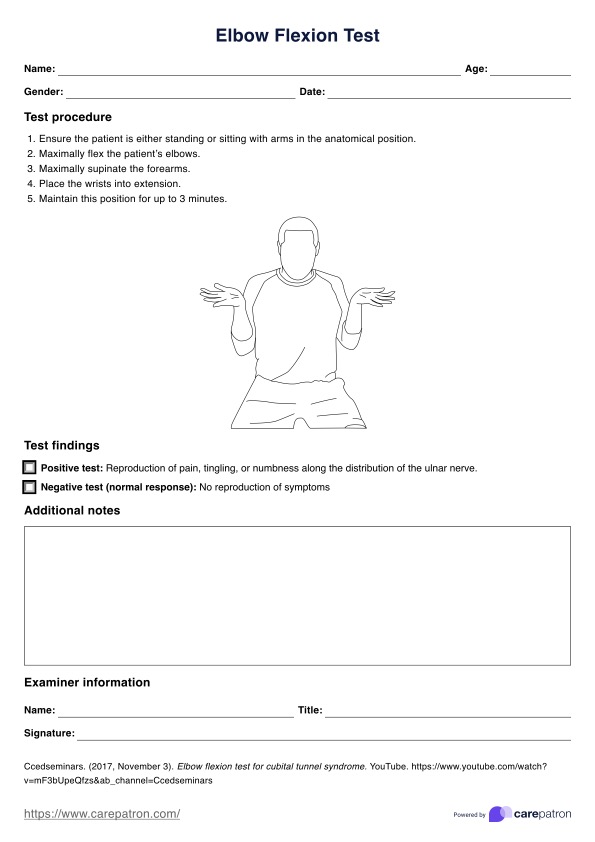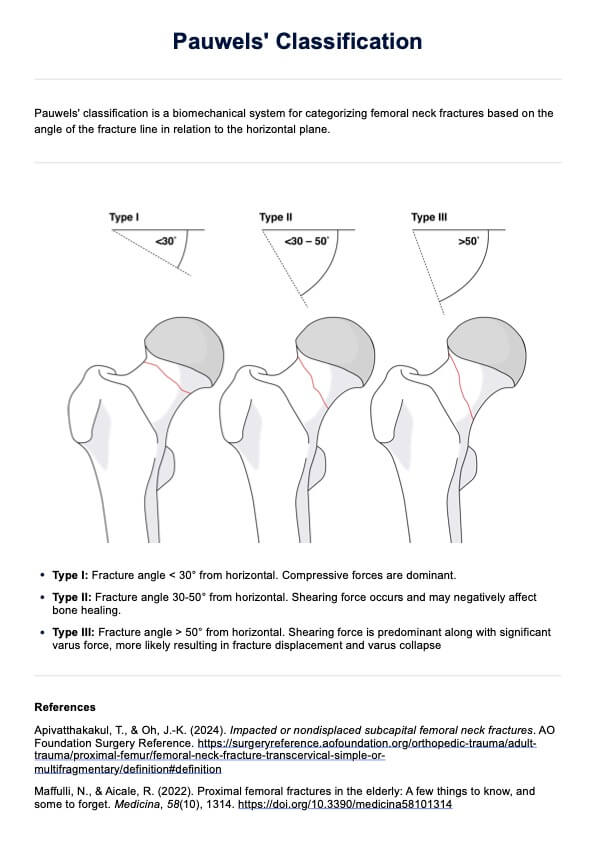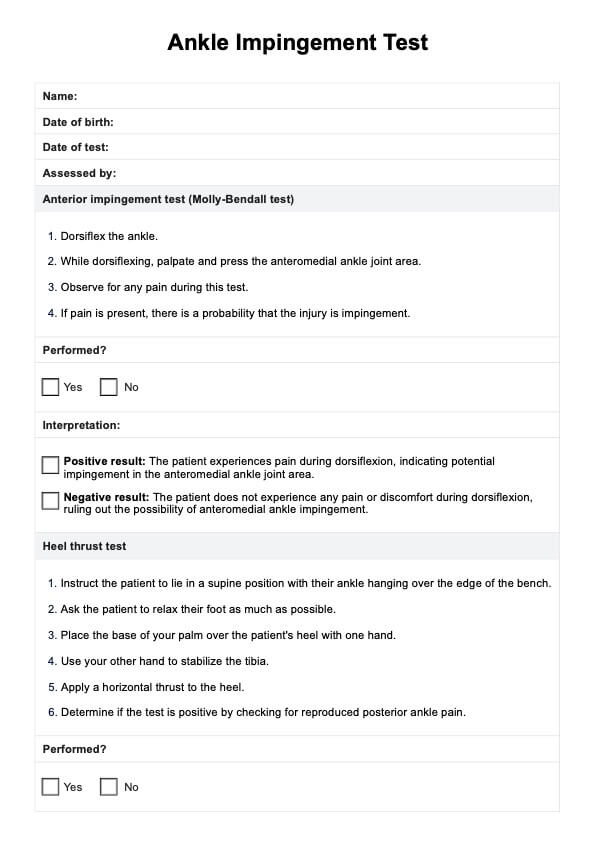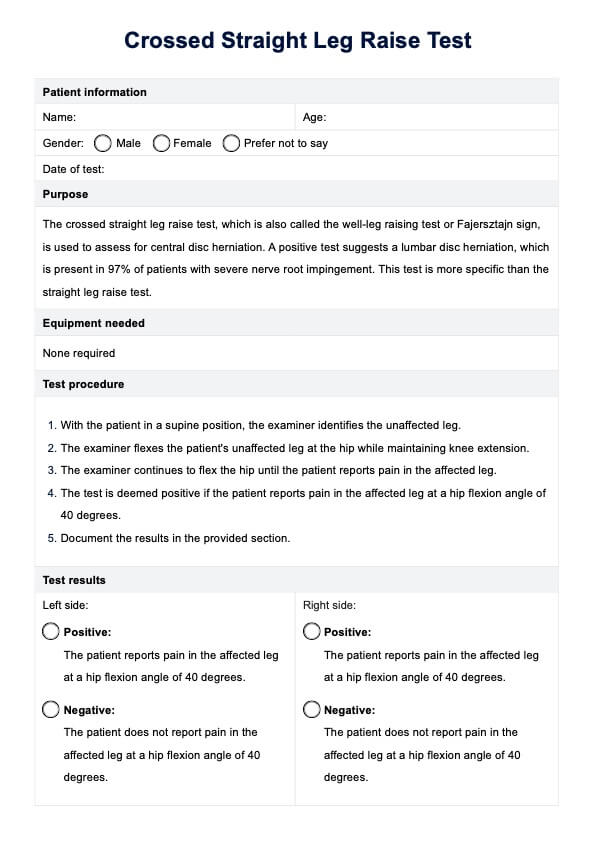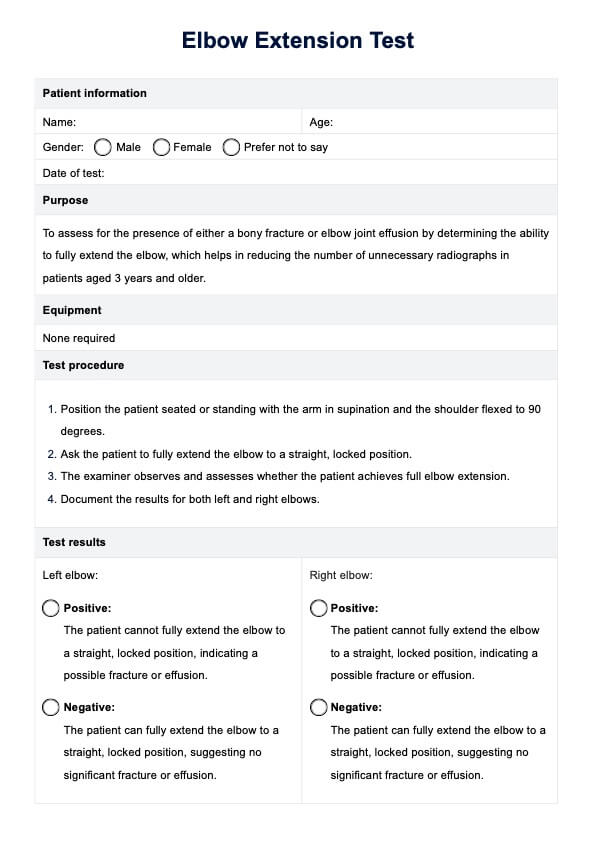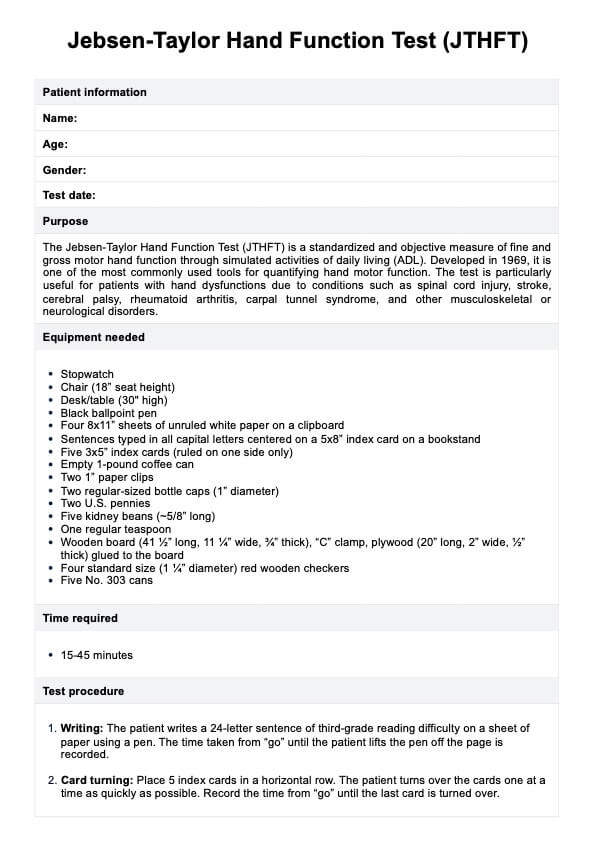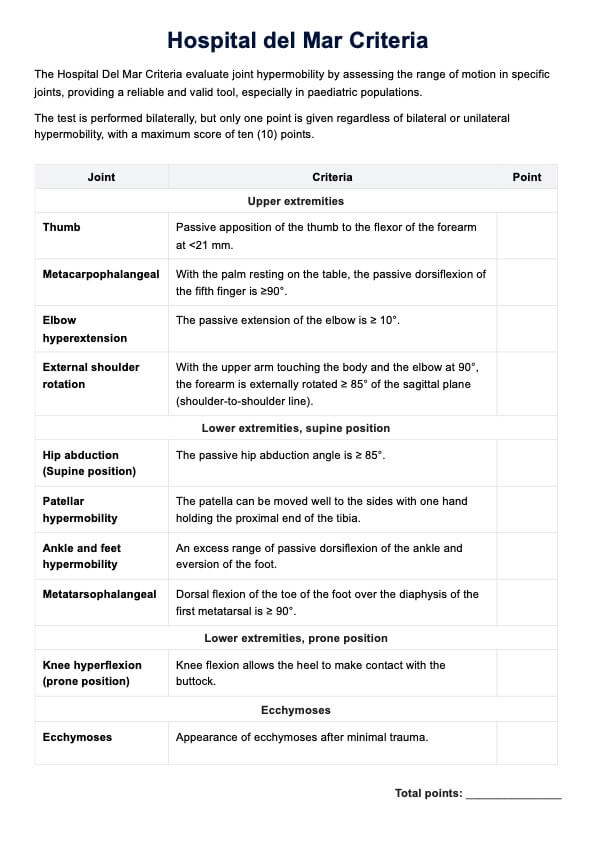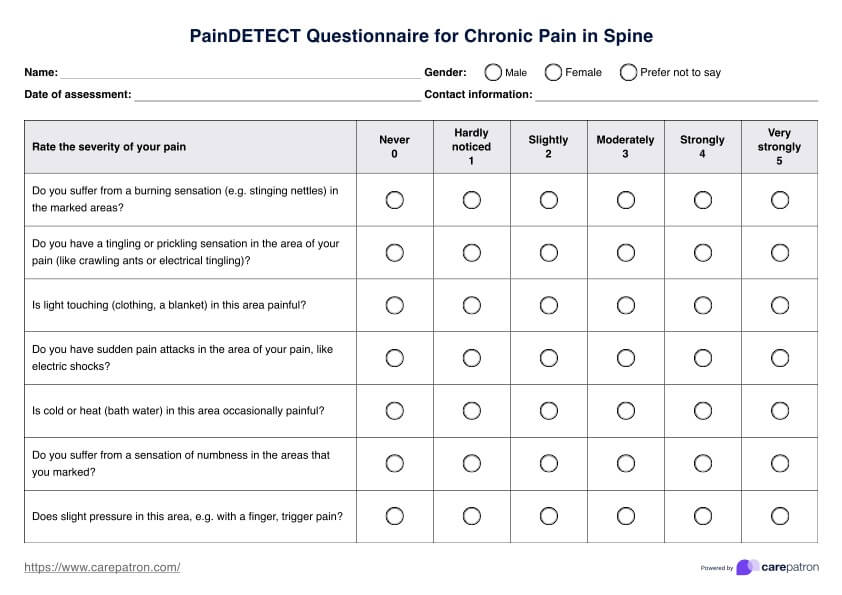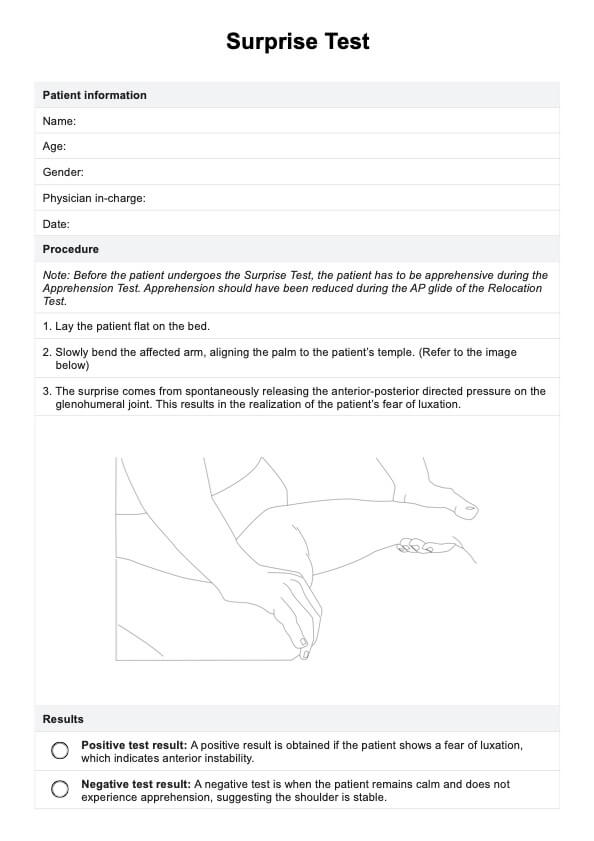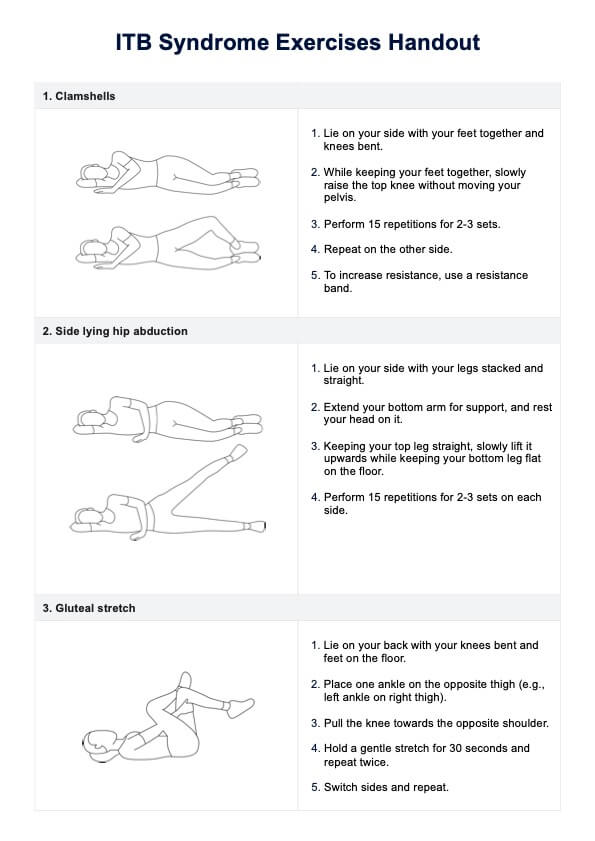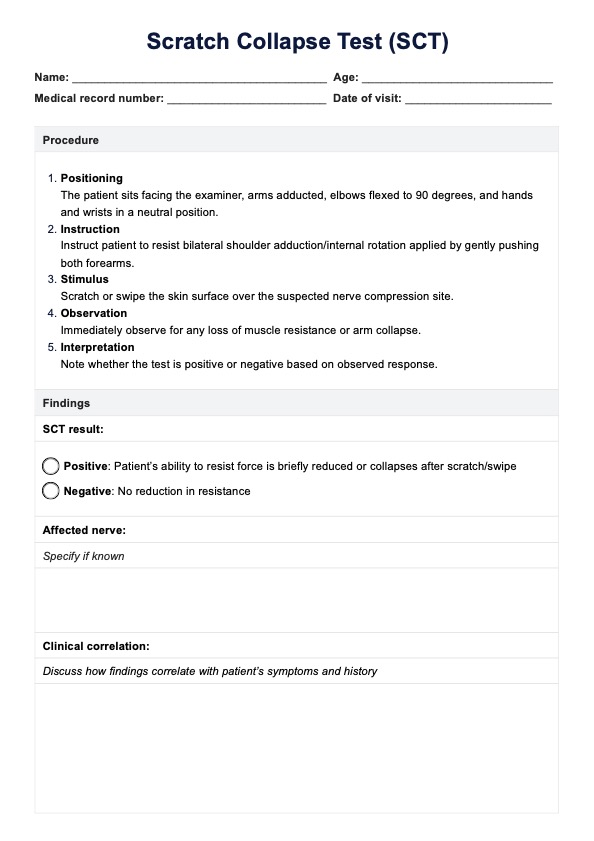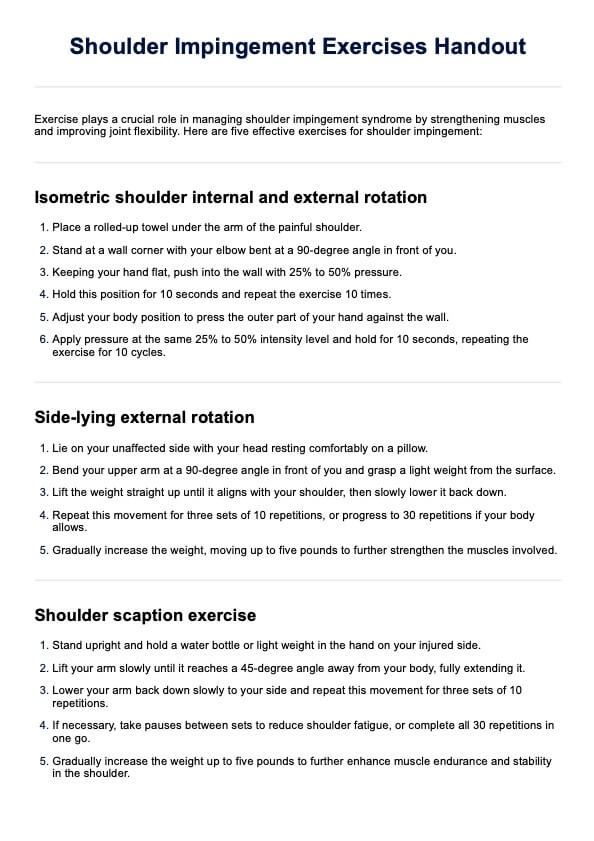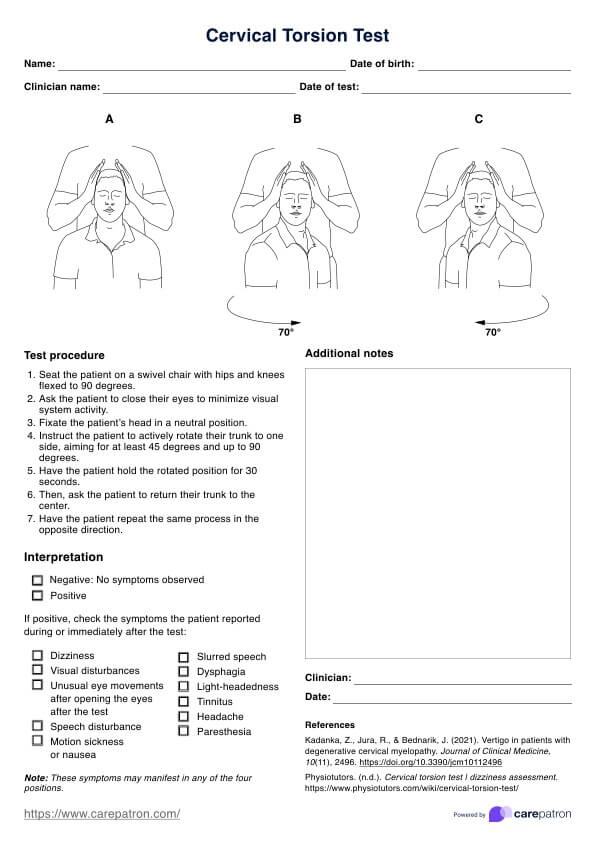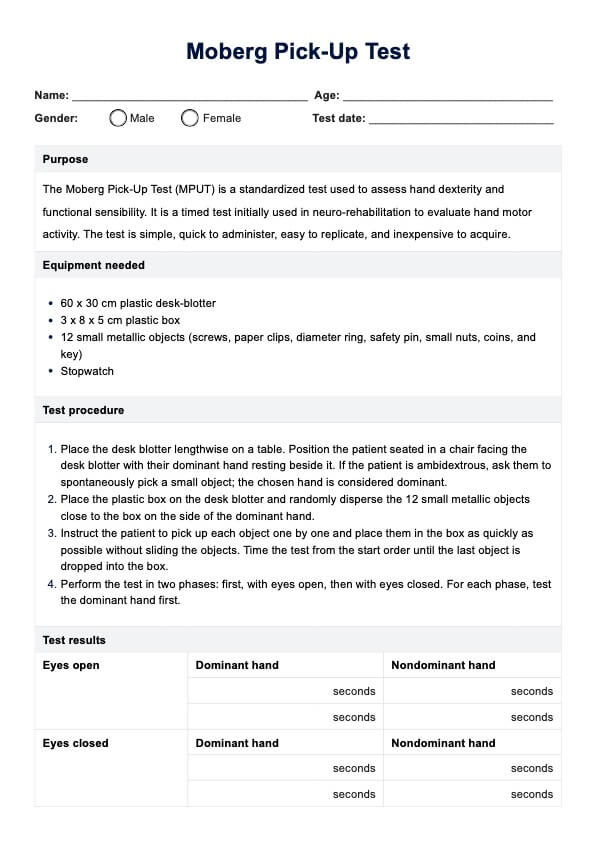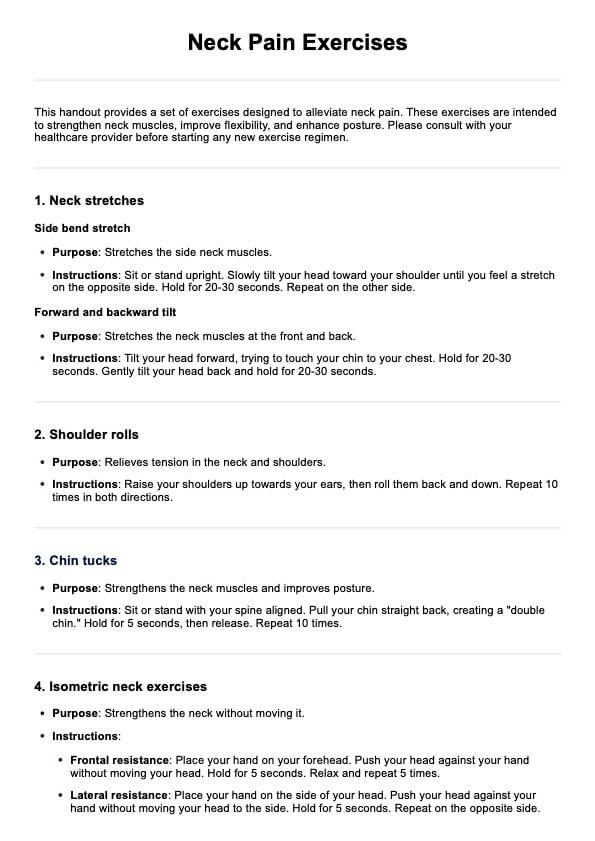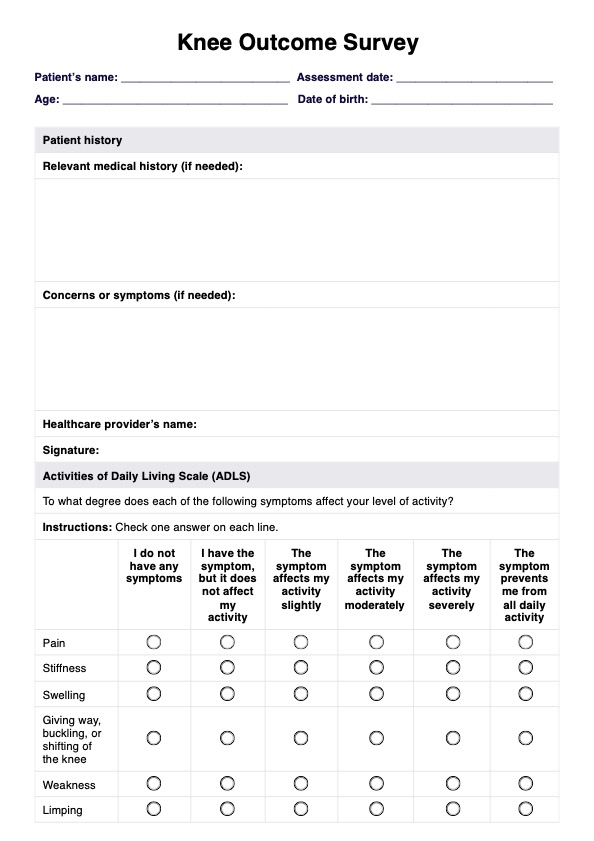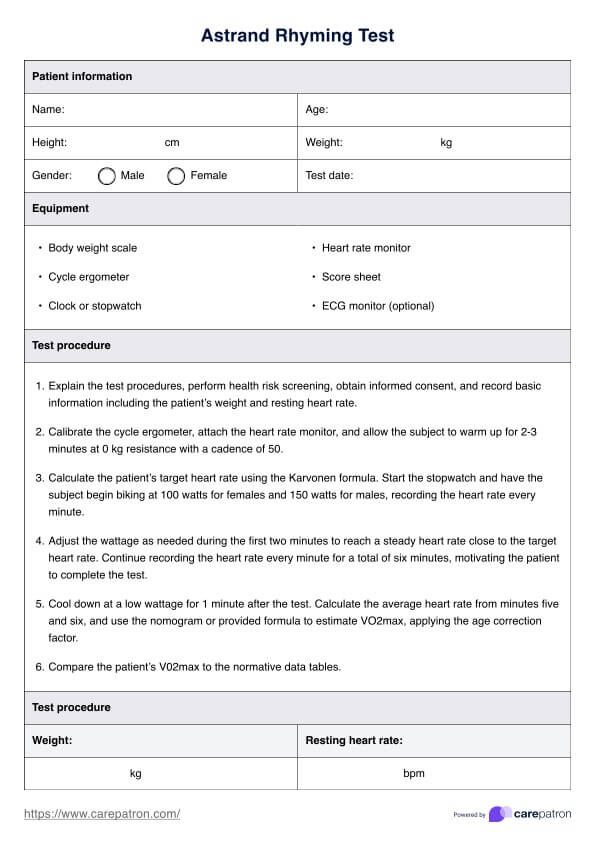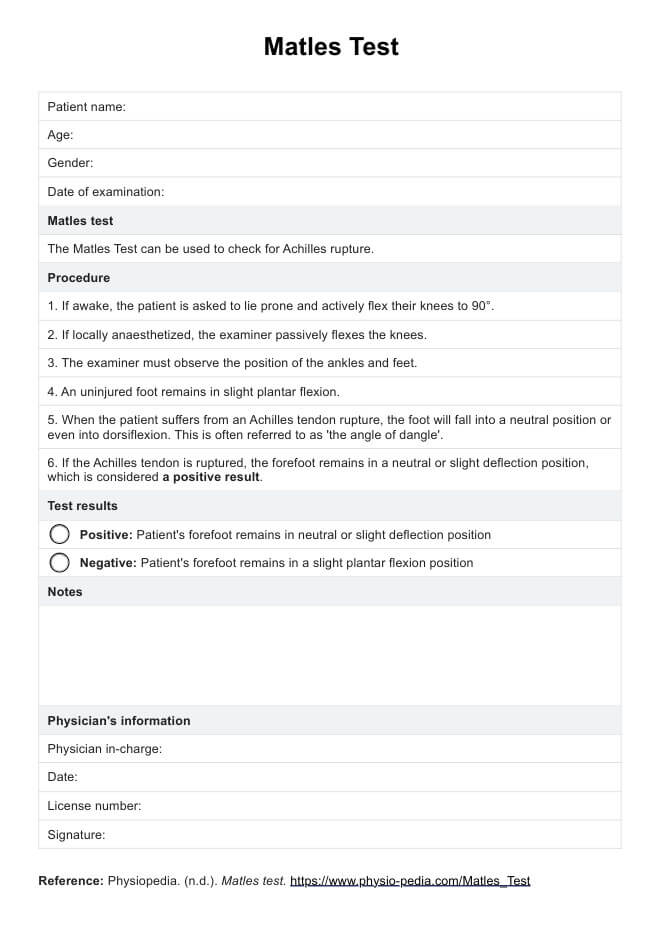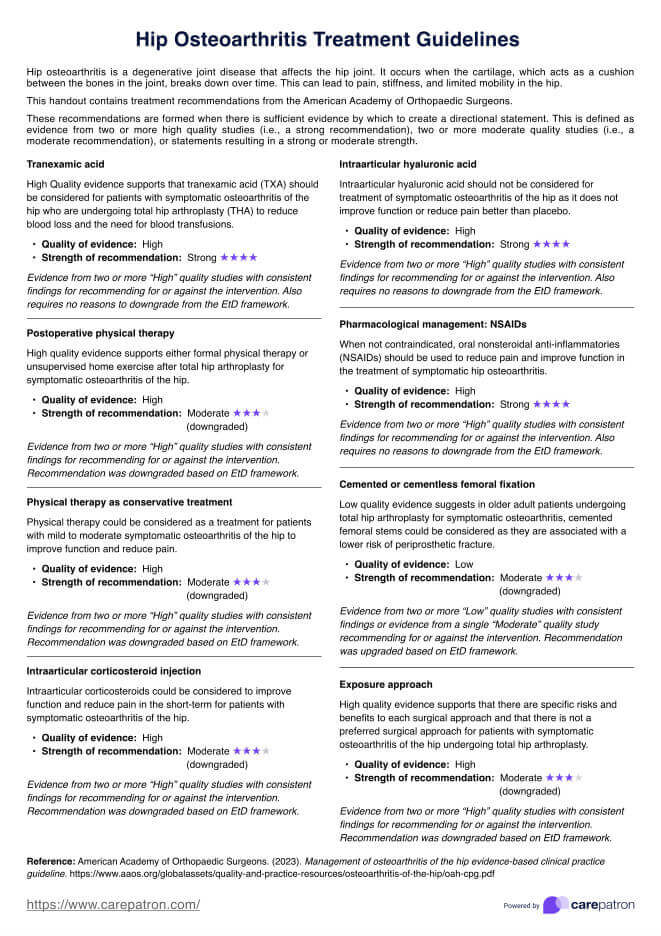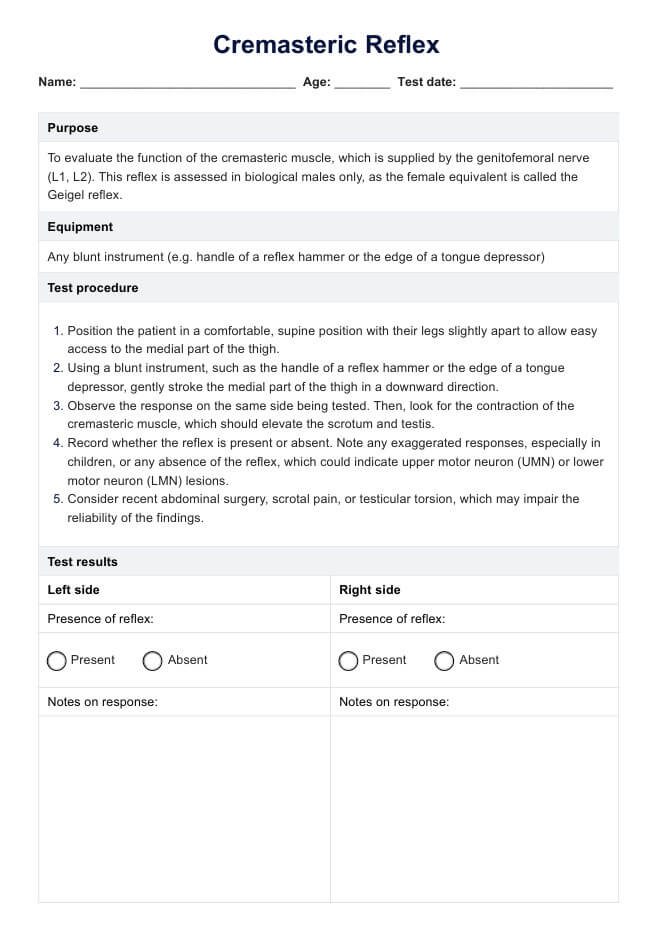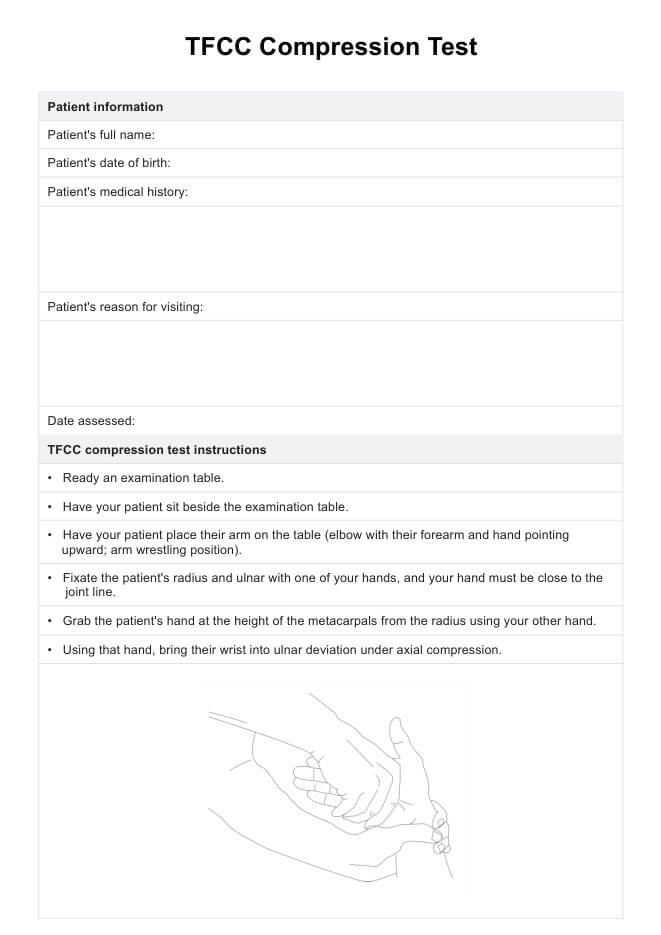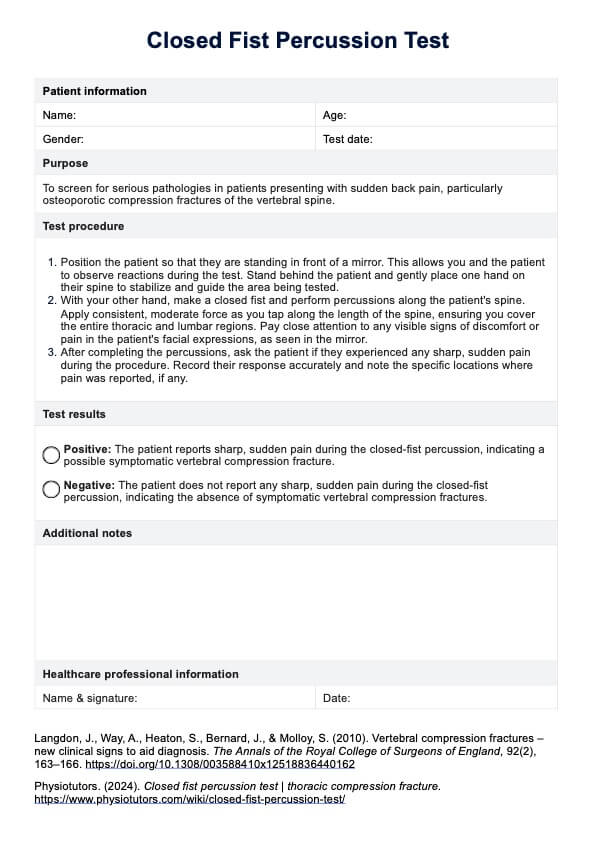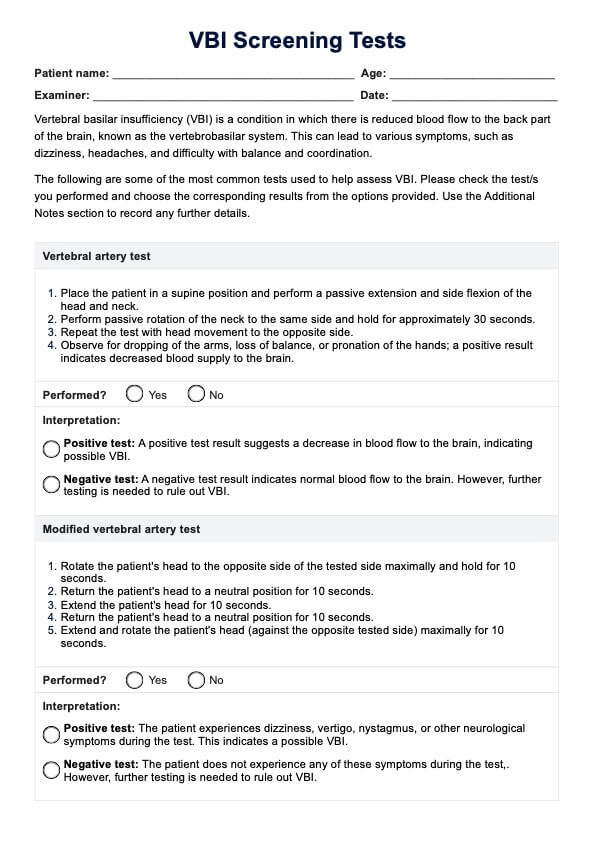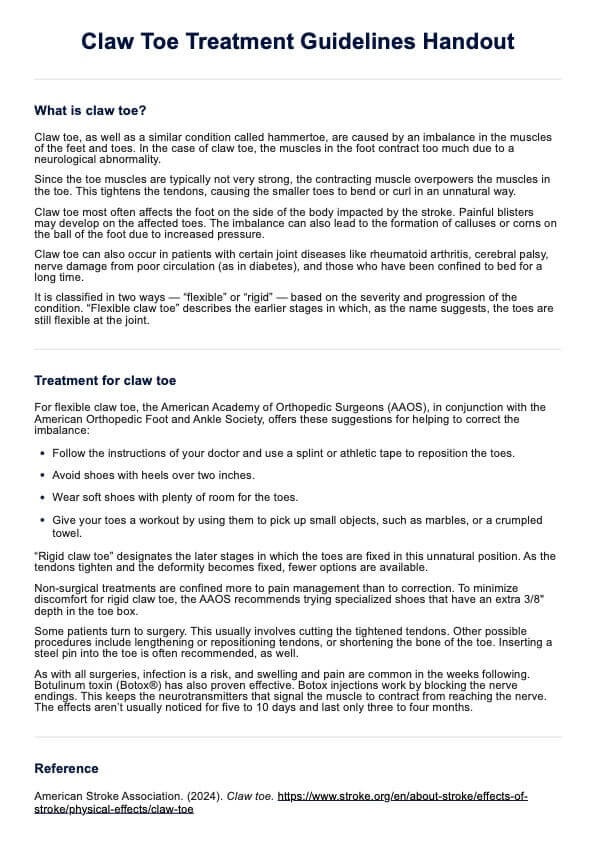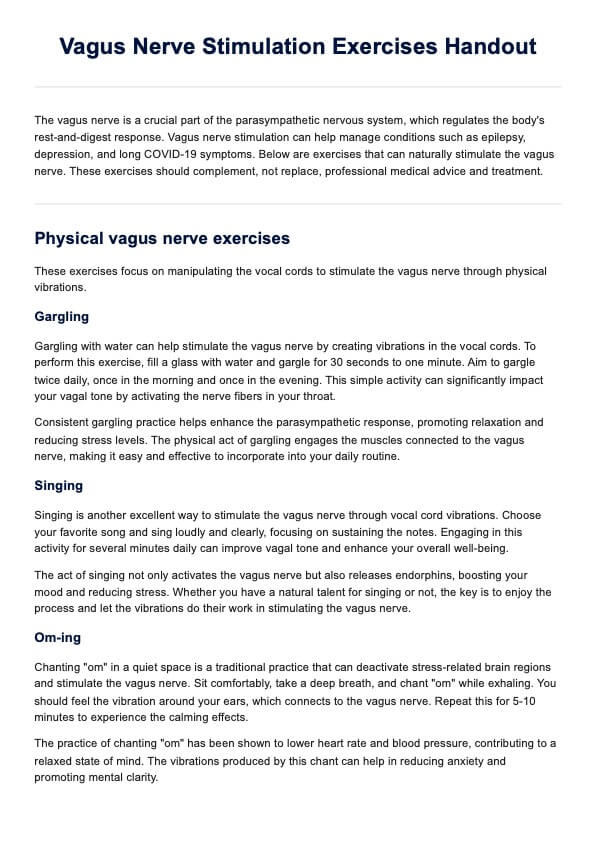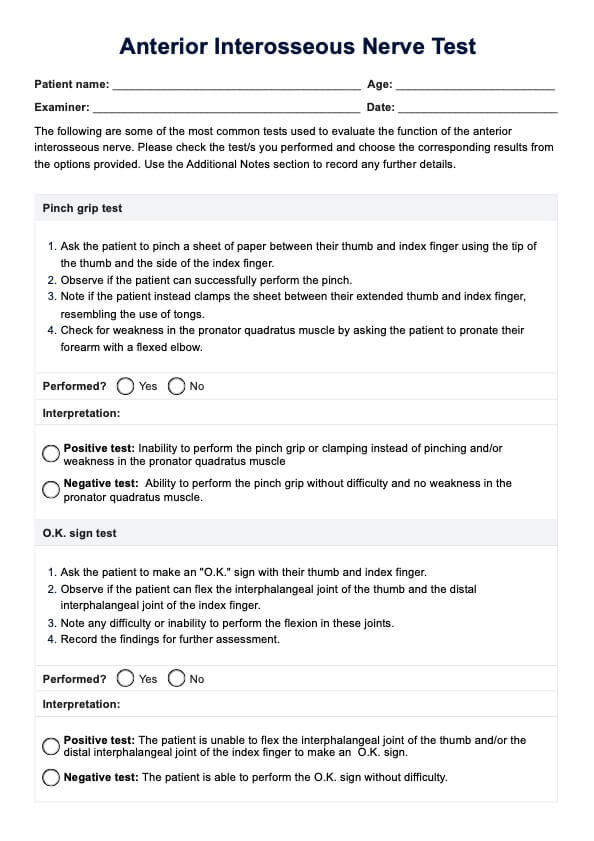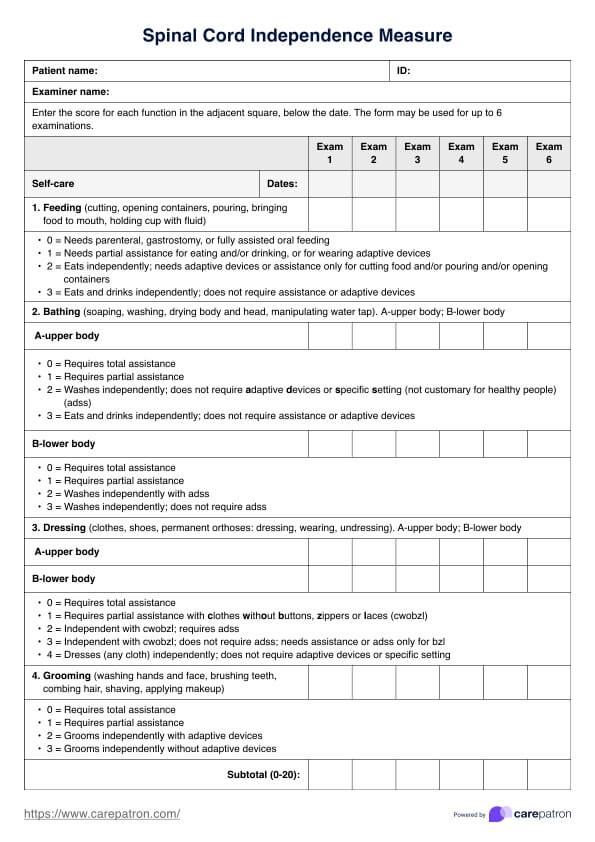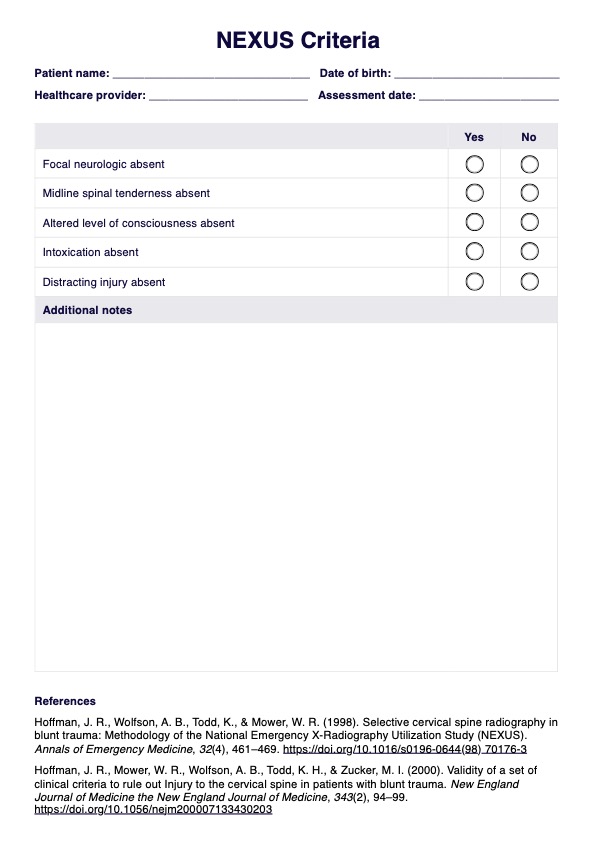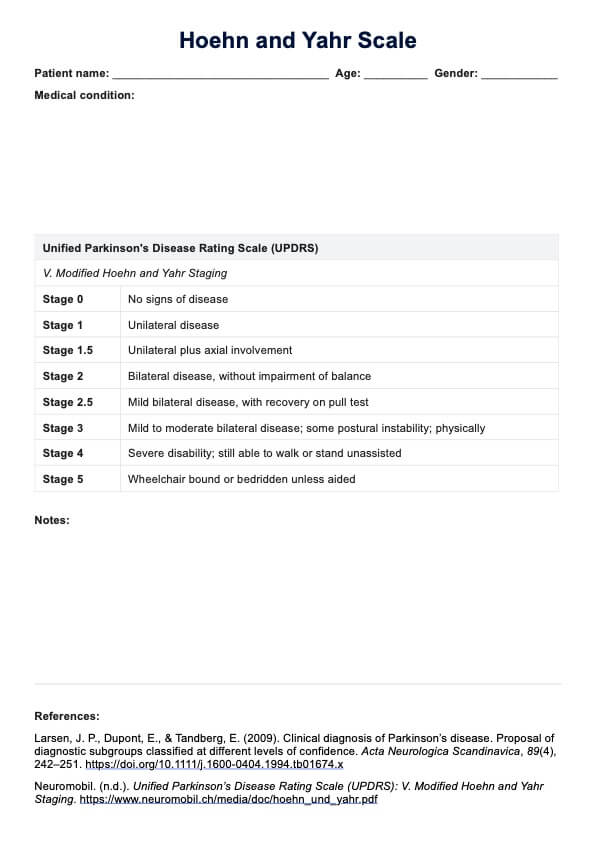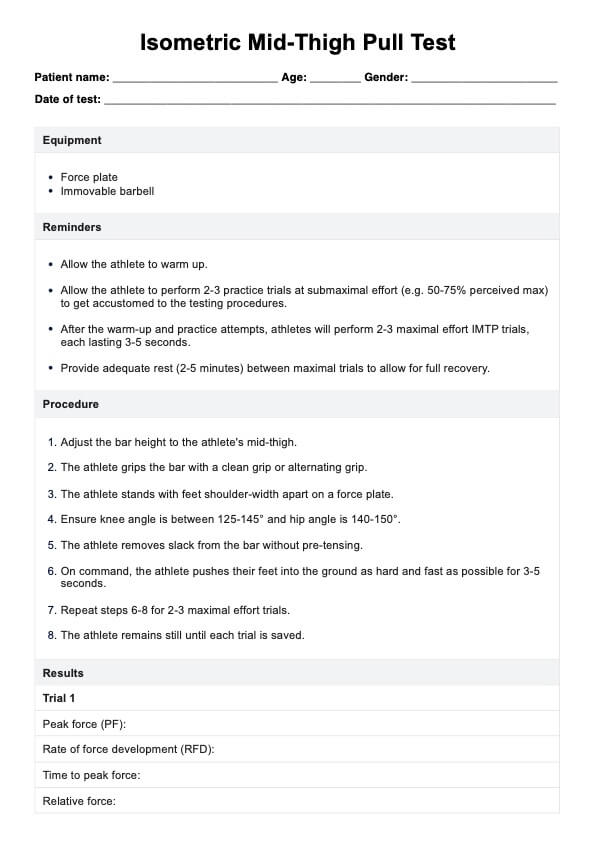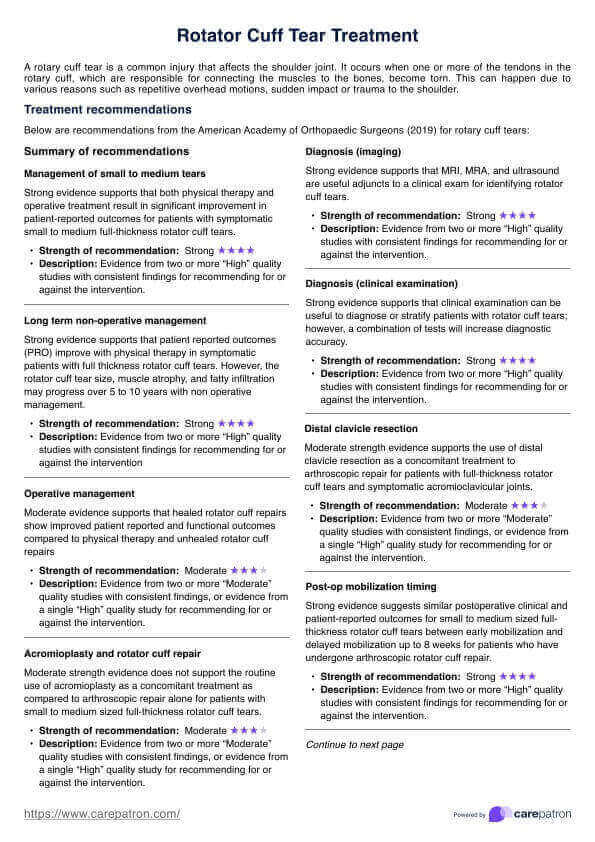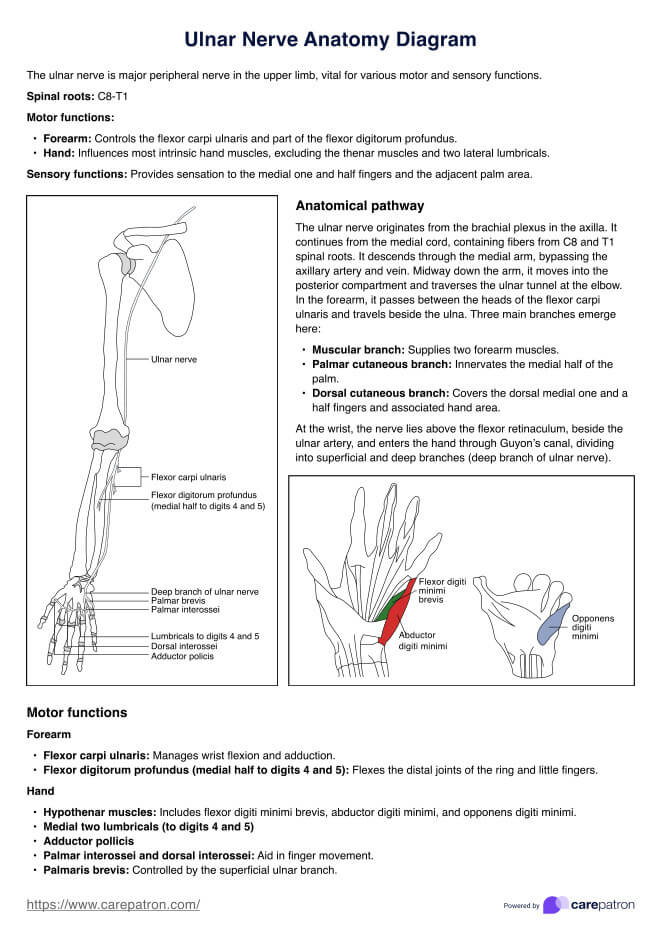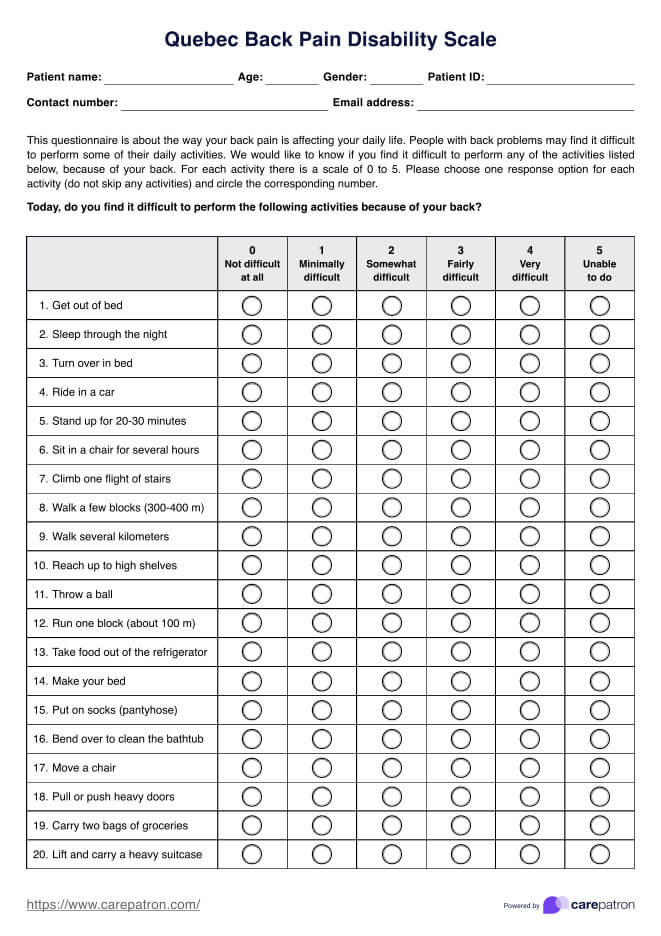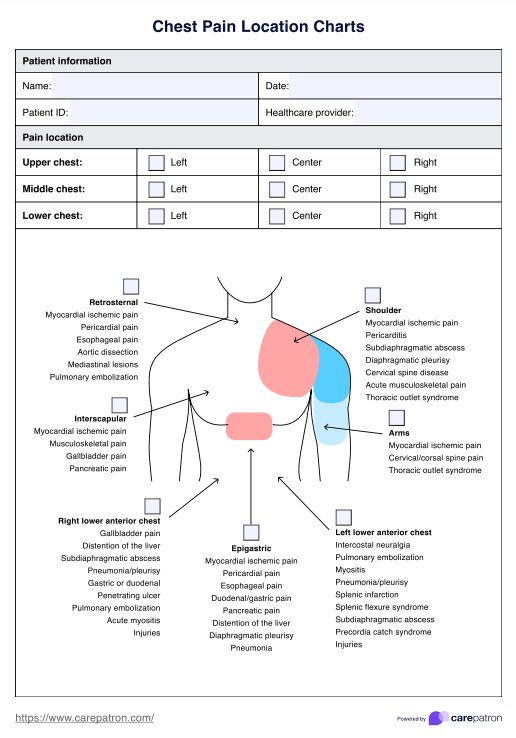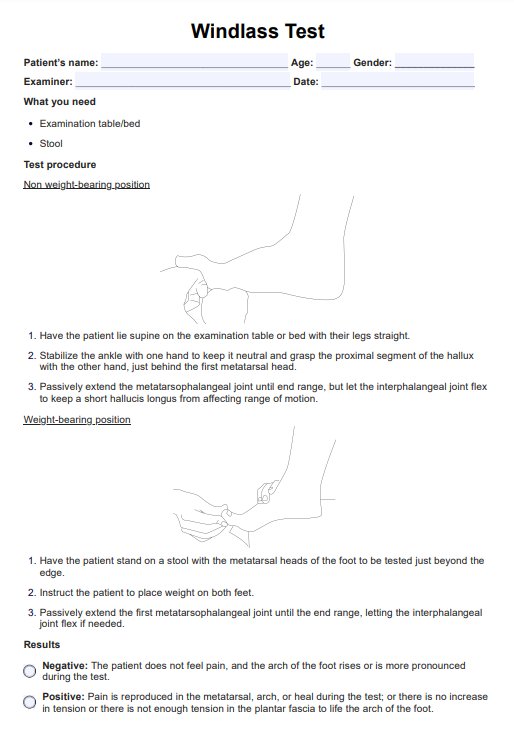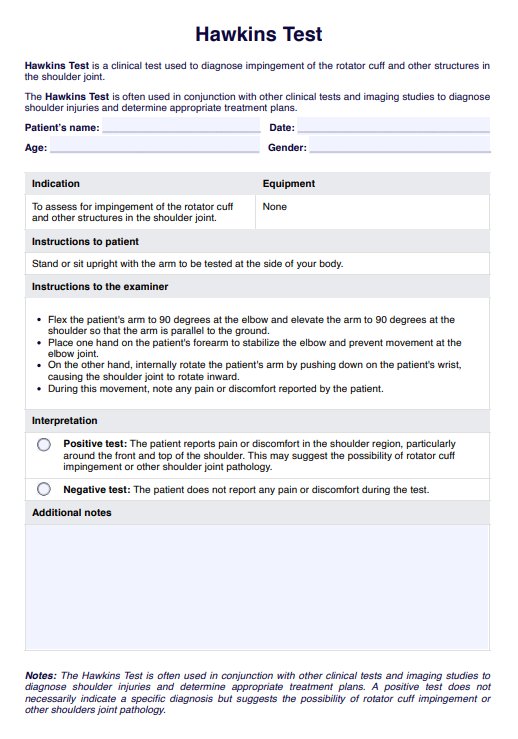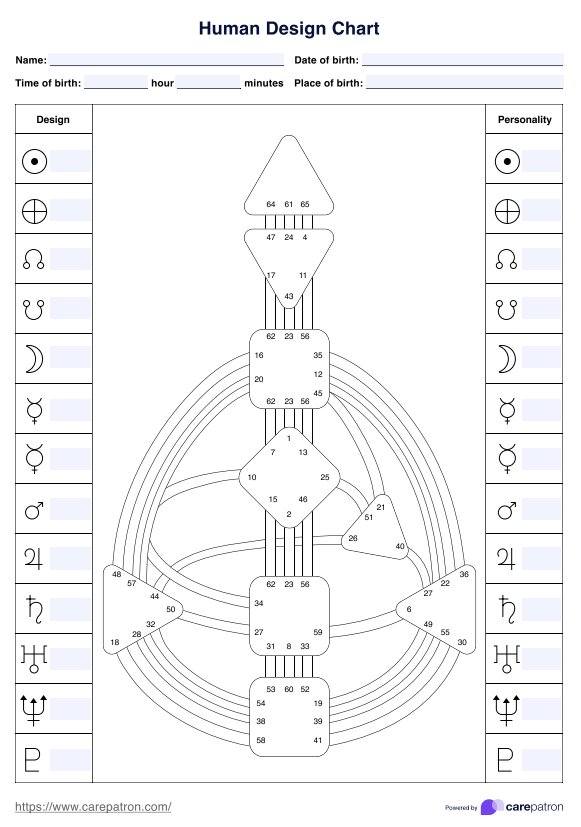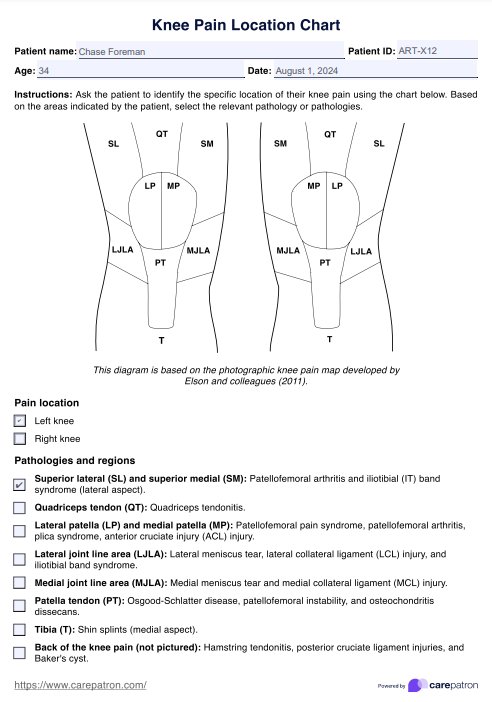Pivot Shift Test
Understand the Pivot Shift Test and its role in diagnosing ACL injuries. Download a free PDF template and example to learn more about this assessment.


What is a Pivot Shift Test?
The anterior cruciate ligament (ACL) is a crucial part of the human body, composed of tough, fibrous tissue. Located in the knee joint, it serves as a strong stabilizer for the knee and provides stability when running, jumping, and changing directions. Without the ACL, these activities become difficult, leading to further pain or injury.
ACL injuries are relatively common among athletes who engage in contact sports such as football or basketball and those who participate in activities like skiing or skateboarding. In addition to the obvious pain associated with an ACL injury, there may also be swelling, instability in the knee joint, and difficulty fully extending the leg.
To help diagnose ACL injuries, a doctor may perform the. It is a quick and easy assessment that can provide valuable insight into the knee's stability. During the test, the doctor will move the leg in specific ways to evaluate how much pressure is necessary to cause a shift in the knee joint.
The test is most commonly done with the patient lying face down on a table and their leg supported by the doctor. The patient’s knee is then moved from a flexed position to an extended one while pressure is applied in various directions. Depending on the results, the doctor can determine if there is a tear in the ACL and what treatment may be needed.
Pivot Shift Test Template
Pivot Shift Test Example
How does this Pivot Shift Test work?
Our free Pivot Shift Test template provides a thorough guide on how to perform the test on your patient. Follow these steps to get started:
Step One: Access the test
Download a copy of the Pivot Shift Test template using the link on this page. Similarly, you can access it from the Carepatron app or our resources library.
Step Two: Discuss the exam with your patient
Explain the procedure to your patient and what is involved. Ensure they understand that the test may cause some discomfort, but it is essential in helping diagnose their condition.
Step Three: Perform the test
Follow the steps on the free template to perform the Pivot Shift Test. Make sure to apply enough pressure to feel a shift in the knee joint, and note any observations during the exam.
Step Four: Interpret the results
Based on your observations, determine if an ACL tear or other issues that need to be addressed.
Step Five: Document the findings
Record your observations and results on the template. This will provide helpful information if your patient needs to be referred for further testing or treatment.
Pivot Shift Test Interpretation
The results of the Pivot Shift Test depend on how much pressure is required to cause a shift in the knee joint. If little to no pressure is needed, this indicates a healthy ACL. However, if more pressure is required to cause the shift, then this may point to an ACL tear or instability in the knee joint.
Make sure to record other details, such as the time it took to cause the shift, the patient’s level of discomfort during the test, and whether or not any clicking or grinding was heard. These details can help determine an ACL injury's severity and the treatment that may be most effective.
It's also important to note that you should use this exam together with other diagnostics, such as imaging scans or physical exams, to get a complete picture of your patient's knee joint condition.
When to use these Pivot Shift assessments?
The Pivot Shift Test is a valuable tool for diagnosing ACL injuries and instability in the knee joint. You can also administer this exam to:
Assess the damage caused by knee injuries or surgery
The Pivot Shift Test can help you determine the extent of damage caused by an injury or surgery. It can help you assess if the ligaments in that area have been affected and how much movement is possible without causing further damage to the knee joint.
Monitor progress during rehabilitation
You can use this exam to monitor progress when a patient begins a course of physical therapy. By regularly evaluating the knee joint, you can track how much progress is being made and if additional treatments are needed.
Reassess the knee joint
If a patient has been suffering from an ACL tear or instability for an extended period, it can be beneficial to re-administer the Pivot Shift Test to ensure that the knee joint is still healthy. This can help you assess if any additional interventions are necessary.
Evaluate the knee's strength and range of motion
You can administer the Pivot Test to determine the amount of strength and range of motion in the knee joint. By assessing how much pressure is needed to cause a shift in the joint, this test can help identify any issues that need to be addressed to maximize your patient's overall joint health and mobility.
Who is this Pivot Shift Test PDF for?
This Pivot Shift Tool is designed to help healthcare professionals assess the condition of a patient's knee joint. Specifically, it can be useful for:
- Physical therapists
- Sports medicine specialists
- Fitness coaches
- Orthopedic surgeons
- Primary care physicians
- Emergency room doctors
- Occupational therapists
- Nurses
You can also use this test in different clinical settings like sports medicine clinics, hospitals, and other facilities.
.png)
Benefits of these free Pivot Shift test templates
The Pivot Shift Test is a simple yet effective tool for assessing the condition of a patient's knee joint. This exam offers heaps of advantages for both healthcare professionals and their patients. Some of the benefits include the following:
It’s quick and easy to use
The Pivot Shift Test can be administered in a matter of minutes, making it a useful tool for busy healthcare professionals. It's also fully digital, so there's no need for paper or additional equipment.
It’s objective and accurate
The Pivot Shift Test is based on a standard set of criteria, which increases its accuracy and objectivity when assessing the knee joint. It also gives you a clear picture of the patient’s range of motion and muscle strength.
It provides important information about your patient's joint health
This test can help you identify potential ACL tears, instability, and other issues affecting the knee joint. This way, you can provide your patient with more accurate diagnosis and treatment recommendations.
It helps track progress in physical therapy
By performing this test regularly, you can monitor your patient's progress during treatment. This means you can adjust your treatment plan accordingly to ensure the best possible results.
Commonly asked questions
The Pivot Shift Test is a physical exam administered by a qualified healthcare professional. It involves assessing the knee joint and the amount of movement it can sustain without causing additional damage. To perform the test, the healthcare provider will apply pressure to the knee joint until a shift is identified.
The Pivot Shift Test is an excellent tool for tracking the progress of physical therapy and assessing the condition of a patient's knee joint. It provides objective information that can help healthcare professionals identify any issues with the joint and a treatment plan accordingly.
The Pivot Shift Test assesses the range of motion, strength in the knee joint, and any signs of ACL tears or instability.


